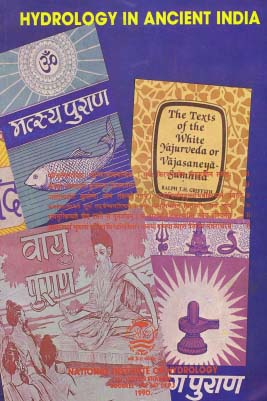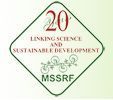/regions/political
Political
International ReSource Award for Sustainable Watershed Management 2012 - Swiss Re - Deadline 30 April 2011
Posted on 08 Feb, 2011 03:31 PMThe International ReSource Award is worth USD 150 000 in total and is granted to one or several projects selected by an international jury. Launched in 2002, the ReSource award is an internationally recognised prize for leadership in implementing the principles of sustainability in watershed management. It is conferred annually. The prize money is awarded exclusively for project implementation activities and not for building-up or strengthening the organizations that are submitting an application.
Eligibility to participate:
NGOs, private, scientific or public institutions and similar bodies are invited to participate in the tender for the International ReSource award for Sustainable Watershed Management. Projects comprising more than one institution (eg public-private
ICICI Fellows 2011
Posted on 08 Feb, 2011 10:12 AM ICICI Fellows is a pioneering leadership programme where the Fellows spend two years working on grassroots development projects with NGOs interspersed with modules on management training and leadership development. The entire experience provides Fellows with knowledge, insight and commitment to inclusive growth.
ICICI Fellows is a pioneering leadership programme where the Fellows spend two years working on grassroots development projects with NGOs interspersed with modules on management training and leadership development. The entire experience provides Fellows with knowledge, insight and commitment to inclusive growth.
Hydrology in ancient India - A book by the National Institute of Hydrology (1990)
Posted on 07 Feb, 2011 11:51 PM It attempts at compiling information on various component processes of hydrology and their interaction. The report has been divided into nine chapters dealing with different aspects of hydrology.
It attempts at compiling information on various component processes of hydrology and their interaction. The report has been divided into nine chapters dealing with different aspects of hydrology.
Like other sciences, the science of water too was well developed in ancient India. The report regrets that at present sufficient attention is not paid to our ancient Indian sciences. The study of Sanskrit literature indicates valuable references to hydrology and important concepts of modern hydrology are scattered in various verses of Vedas, Puranas, Meghmala, Mayurchitraka, Vrhat Sanhita and various other ancient Indian works.
Some of the key references are as follows –
- In vedic age, Indians had developed the concept that water gets divided into minute particles due to the effect of sun rays and wind. At various places in the Puranas it is alluded that water cannot be created or destroyed and that only its state is changed through various phases of hydrological cycle.
- Evaporation, condensation, cloud formation, precipitation and its measurement were well understood in India in vedic and puranic times.
- Effect of yajna, forests, reservoirs etc., on the causation of rainfall, classification of clouds, their colour, rainfall capacity etc, forecasting of rainfall on the basis of natural phenomenon like colour of sky, clouds, wind direction, lightning, and the activities of animals was well developed in ancient India well before 10th century BC.
- Contrivances to measure rainfall were developed during the time of Kautilya (4th century BC) which had the same principle as that of modern hydrology except the fact that weight measure (of drone, paia etc.,) were adopted instead of modern linear measurement of rainfall.
- Scientific facts like arid region of Tibetan rain shadow area and no rainfall by polar winds was discussed in the puranas. The knowledge of monsoon winds and height of clouds along with the division of atmosphere was well developed in vedic age.
- The technique of knowing the slope of an area by means of a flowing river and dimensions of meandering rivers along with velocity of flow were developed.
- In ancient times, Indians had well developed concepts of groundwater occurrence, distribution and utilization. Literature also reveals that hydrologic indicators such as physiographic features, termite mounds, soils, flora, fauna, rocks and minerals were used to detect the presence of groundwater.
- Variation in the height of water table with place, hot and cold springs, ground water utilization by means of wells, well construction methods and equipment are fully described in chapter 54 of Vrhat Sanhita (Bruhat Samhita) named as ‘Dakargala’. The fact that sun rays, winds, humidity, vegetation etc are the major causes of evapotranspiration was well realized.
- Varamihira in as early as 550 AD presented a simple method for obtaining potable water from a contaminated source of water. Various plant materials along with the sun heating, aeration, quenching of water with fire heated stones, gold, silver, iron or sand were used. The change in the quality of water with the months of year and suitability of water from different sources for various uses were described.
- Efficient water use, lining of canals, construction of dams, tanks, essential requirements for the construction of good tanks, bank protection methods, spillways and other minor aspects were given due consideration in ancient times in India.
- Well organized water pricing system was prevalent during the times of Kautilya.
- Various references are available in the Vedas alluding the importance of efficient water use so as to reduce the intensity of water scarcity and drought.

GRAMICID Food graded disinfectant for water and food Industries
Posted on 07 Feb, 2011 06:07 PMGramicid for Dairy & Ice-cream Industry Sanitation: The Dairy Industry maintains a high growth rate throughout the year. The Quality guidelines enforced upon the Industry are stringent and the product quality can only be generated through continuous Quality Control Measures.
An insight on legal aspect of groundwater use by industries and water tax/rate/fee by Emami Paper Mills Limited
Posted on 07 Feb, 2011 06:03 PM- Meaning of Ground Water
- Water located beneath the ground surface.
Groundwater is stored in and moves slowly through layers of soil, sand and rocks called aquifers. Aquifers typically consist of gravel, sand, sandstone, or fractured rock, like limestone.
Implementing Vessel Monitoring System in India : High costs involved
Posted on 07 Feb, 2011 06:01 PMIntroduction:
A leaflet on hand washing in Assamese by Resources Centre for Sustainable Development
Posted on 07 Feb, 2011 06:00 PMSupported by: ARGHYAM
WMO/ESCAP Panel On Tropical Cyclones - 38th session, 21st - 25th February, 2011, New Delhi
Posted on 07 Feb, 2011 12:00 PM To improve tropical cyclone warning systems in the Bay of Bengal and the Arabian Sea through effective operational plan
To improve tropical cyclone warning systems in the Bay of Bengal and the Arabian Sea through effective operational plan
Organizers: India Meteorological Department(IMD), World Meteorological Organisation(WMO), Economic and Social Commission for Asia and the Pacific (ESCAP)
Venue: Scope Complex, Lodi Road, New Delhi
Critical Global Challenge - Managing Water Resources for Food Security and Sustainability, 4th - 6th March, 2011, MSSRF, Chennai
Posted on 07 Feb, 2011 11:13 AM Organizers: MSSRF and University of Nebraska
Organizers: MSSRF and University of Nebraska
Venue: M S Swaminathan Research Foundation, Chennai
Topics:
- Setting the Agenda – Emerging Issues in Water
- Managing Water for Food Production
- Water Productivity in Agriculture
Agenda for Survival - A month long course on environment and development issues, Centre for Science and Environment, 1st - 30th June, 2011, Anil Agarwal Green College, New Delhi
Posted on 05 Feb, 2011 02:03 PM Organizer: Centre for Science and Environment(CSE)
Organizer: Centre for Science and Environment(CSE)
Venue: Anil Agarwal Green College, Tughlakabad Institutional Area, New Delhi
Topics:
- State of India’s environment: An overview
- The environmental movement in India
- Poverty and the biomass economy
- Ecological rights & natural resource management
- Land and its use: Agriculture, food security
- Conservation & conflict: wildlife management debate